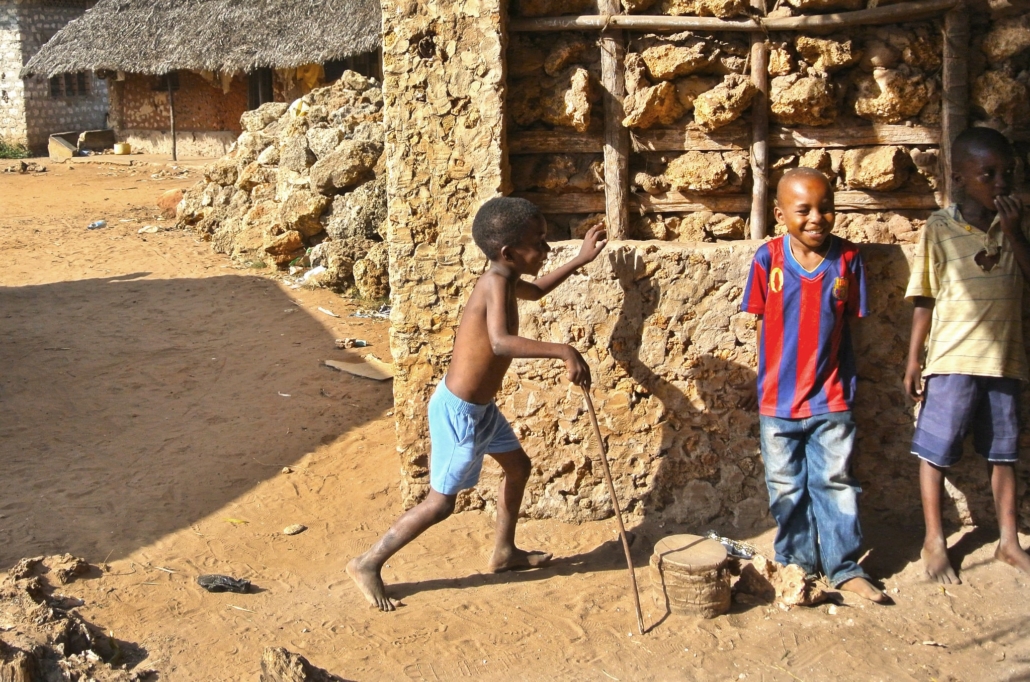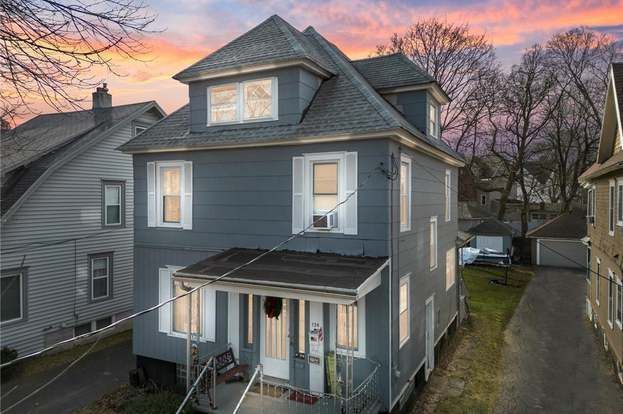Report on Indoor Environmental Health in Informal Settlements and its Alignment with Sustainable Development Goals
Introduction: A Critical Challenge to Sustainable Urbanization
Informal settlements, home to millions globally, present a significant challenge to the achievement of the 2030 Agenda for Sustainable Development. While issues of sanitation and water access are well-documented, the invisible threat of mold and poor indoor air quality poses a severe risk to public health, directly undermining progress on key Sustainable Development Goals (SDGs). This report analyzes the causes and health impacts of this threat and proposes solutions framed within the SDG framework, particularly focusing on SDG 3 (Good Health and Well-being) and SDG 11 (Sustainable Cities and Communities).
Causal Factors Hindering SDG Attainment
Inadequate Housing and Infrastructure: A Barrier to SDG 11
The physical environment in informal settlements is a primary driver of poor indoor air quality. These conditions represent a failure to meet SDG Target 11.1, which calls for access to adequate, safe, and affordable housing and the upgrading of slums.
- Substandard Materials: Dwellings are often constructed from salvaged or low-cost materials that offer poor insulation and are susceptible to water intrusion and dampness.
- Poor Ventilation: Overcrowding and dense construction severely limit natural air circulation, trapping moisture and pollutants indoors.
- Lack of Basic Services: Inadequate drainage and waste management systems contribute to pervasive dampness, creating ideal breeding grounds for mold.
Energy Poverty and Indoor Pollution: Contravening SDG 7
A significant contributor to poor air quality is the reliance on polluting energy sources for basic needs, a direct challenge to SDG 7 (Affordable and Clean Energy). Many households depend on open fires or rudimentary stoves for cooking and heating, releasing harmful pollutants such as particulate matter and volatile organic compounds into confined living spaces. This energy poverty not only compromises health but also disproportionately affects women and children, who spend more time indoors, linking the issue to SDG 5 (Gender Equality).
Health Ramifications: A Direct Threat to SDG 3
Exposure to mold and contaminated indoor air has profound health consequences, creating significant setbacks for achieving SDG 3 (Good Health and Well-being). The impacts are particularly severe for vulnerable populations, including children, the elderly, and those with pre-existing health conditions.
- Respiratory Illnesses: Chronic exposure is a major cause of respiratory conditions, including allergies, asthma, acute respiratory infections, and Chronic Obstructive Pulmonary Disease (COPD). This directly impedes progress on SDG Target 3.9, which aims to reduce deaths and illnesses from air pollution, and Target 3.4, focused on reducing premature mortality from non-communicable diseases.
- Allergic and Dermatological Conditions: Mold spores and damp environments can trigger skin rashes, itchy eyes, and other allergic reactions, contributing to a lower quality of life.
- Cognitive and Developmental Impacts: Emerging evidence links poor indoor air quality in early childhood to impaired cognitive development and academic performance. This creates a vicious cycle of poverty and poor health, undermining SDG 4 (Quality Education) and SDG 1 (No Poverty).
- Mental Health Deterioration: Living in persistently damp, mold-affected, and unhealthy environments contributes to stress, anxiety, and depression, hindering the promotion of mental health and well-being as outlined in SDG Target 3.4.
Strategic Interventions Aligned with the 2030 Agenda
Addressing this multifaceted problem requires an integrated approach that leverages solutions to advance multiple SDGs simultaneously.
-
Improving Housing and Basic Infrastructure (SDG 11, SDG 13)
Upgrading living conditions is fundamental. This involves promoting building designs with improved ventilation, educating residents on moisture control, and encouraging the use of affordable, locally sourced, and moisture-resistant building materials. Such efforts directly support SDG 11.1 and can incorporate sustainable materials that enhance climate resilience, contributing to SDG 13 (Climate Action).
-
Enhancing Access to Clean Energy (SDG 7, SDG 5)
Transitioning households to cleaner cooking technologies, such as improved cookstoves or alternative fuels, is critical. This intervention is a direct pathway to achieving SDG Target 7.1 (universal access to modern energy) and yields co-benefits for SDG 5 by reducing the health burden on women and children.
-
Community Engagement and Health Education (SDG 3, SDG 11)
Empowering residents with knowledge about the health risks and practical mitigation strategies is essential for sustainable change. Community-led initiatives, such as those facilitated by Slum Dwellers International (SDI), foster participatory approaches to upgrading settlements, aligning with the inclusive spirit of SDG 11. Health monitoring programs can track the prevalence of related illnesses, enabling targeted public health interventions in line with SDG 3.
-
Policy and Urban Planning Reform (SDG 1, SDG 10, SDG 16)
Effective policy is a crucial enabler. Granting secure land tenure (SDG 1, SDG 16) incentivizes residents to invest in home improvements. Integrating health considerations into urban planning for informal settlements, with a focus on ventilation, open spaces, and access to services like piped water and drainage, is vital for long-term progress. These actions reduce systemic inequalities (SDG 10) and build the foundation for sustainable and resilient communities.
Conclusion: An Integrated Path to a Healthier Future
Combating mold and poor air quality in informal settlements is an urgent public health imperative and a critical component of the sustainable development agenda. By implementing integrated strategies that combine housing improvements, clean energy access, community empowerment, and supportive policies, it is possible to mitigate these invisible threats. Such an approach will not only safeguard public health but also accelerate progress toward achieving a more equitable, resilient, and sustainable future for all, in direct alignment with the principles of SDG 3 and SDG 11.
Analysis of Sustainable Development Goals in the Article
1. Which SDGs are addressed or connected to the issues highlighted in the article?
- SDG 3: Good Health and Well-being: The article extensively discusses the severe health consequences of mold and poor air quality, including respiratory illnesses, allergies, and mental health issues.
- SDG 11: Sustainable Cities and Communities: The core focus is on informal settlements, highlighting issues of inadequate housing, lack of basic services, and the need for improved urban planning.
- SDG 7: Affordable and Clean Energy: The article identifies the reliance on open fires and rudimentary stoves for cooking and heating as a primary source of indoor air pollution and suggests cleaner energy solutions.
- SDG 1: No Poverty: The article links poor living conditions and health impacts to the perpetuation of poverty, and identifies solutions like secure land tenure that are central to poverty reduction.
2. What specific targets under those SDGs can be identified based on the article’s content?
SDG 3: Good Health and Well-being
- Target 3.9: By 2030, substantially reduce the number of deaths and illnesses from hazardous chemicals and air, water and soil pollution and contamination.
Explanation: The article directly addresses this target by focusing on the health impacts of indoor air pollution from mold and cooking fires. It states that these conditions contribute to “acute respiratory infections, chronic obstructive pulmonary disease (COPD) and even lung cancer,” which are illnesses caused by air pollution.
SDG 11: Sustainable Cities and Communities
- Target 11.1: By 2030, ensure access for all to adequate, safe and affordable housing and basic services and upgrade slums.
Explanation: The article’s entire context is informal settlements, described as having “inadequate infrastructure and precarious living conditions.” Solutions proposed, such as “improving housing design and materials,” “better ventilation,” and investing in “basic infrastructure like drainage systems, piped water and electricity,” directly align with upgrading slums and ensuring adequate and safe housing.
SDG 7: Affordable and Clean Energy
- Target 7.1: By 2030, ensure universal access to affordable, reliable and modern energy services.
Explanation: The article points out that many residents “rely on open fires or rudimentary stoves for cooking and heating,” which are not modern or clean energy sources. A key solution mentioned is to promote “access to and adoption of cleaner cooking technologies, such as improved cookstoves or alternative fuels,” which directly supports this target.
SDG 1: No Poverty
- Target 1.4: By 2030, ensure that all men and women, in particular the poor and the vulnerable, have equal rights to economic resources, as well as access to basic services, ownership and control over land…
Explanation: The article proposes a policy intervention of “granting secure land tenure to residents of informal settlements,” arguing it would “incentivize them to invest in improving their homes and living conditions.” This directly relates to ensuring control over land as a means of poverty reduction.
3. Are there any indicators mentioned or implied in the article that can be used to measure progress towards the identified targets?
Indicators for SDG 3
- Implied Indicator for Target 3.9: Prevalence of respiratory illnesses and other health issues linked to indoor air quality.
Explanation: The article suggests establishing “community-based health monitoring programs can help track the prevalence of respiratory illnesses and other health issues linked to indoor air quality.” This tracking serves as a direct measure of the health burden from air pollution.
Indicators for SDG 11
- Implied Indicator for Target 11.1: Proportion of population living in housing with adequate ventilation and moisture-resistant materials.
Explanation: The article describes the problem as dwellings with “minimal insulation and poor ventilation.” The solutions focus on “strategically placed windows and vents” and “moisture-resistant building materials.” Measuring the adoption of these features would indicate progress toward adequate housing.
Indicators for SDG 7
- Implied Indicator for Target 7.1: Proportion of population adopting cleaner cooking technologies.
Explanation: The article explicitly mentions promoting the “adoption of cleaner cooking technologies, such as improved cookstoves or alternative fuels.” The rate of adoption within these communities would be a direct indicator of progress towards universal access to modern energy.
Indicators for SDG 1
- Implied Indicator for Target 1.4: Proportion of population in informal settlements with secure land tenure.
Explanation: The article proposes “granting secure land tenure” as a key policy solution. Therefore, measuring the percentage of residents who have been granted these rights would be a direct indicator of progress for this target.
Table of SDGs, Targets, and Indicators
| SDGs | Targets | Indicators (as identified in the article) |
|---|---|---|
| SDG 3: Good Health and Well-being | 3.9: Substantially reduce deaths and illnesses from air pollution and contamination. | Prevalence of respiratory illnesses and other health issues tracked through community-based health monitoring. |
| SDG 11: Sustainable Cities and Communities | 11.1: Ensure access for all to adequate, safe and affordable housing and basic services and upgrade slums. | Proportion of housing in informal settlements with improved features like better ventilation, moisture control, and upgraded materials. |
| SDG 7: Affordable and Clean Energy | 7.1: Ensure universal access to affordable, reliable and modern energy services. | Rate of adoption of cleaner cooking technologies (e.g., improved cookstoves, alternative fuels) among residents. |
| SDG 1: No Poverty | 1.4: Ensure equal rights to economic resources, access to basic services, and control over land. | Proportion of residents in informal settlements who have been granted secure land tenure. |
Source: borgenproject.org







